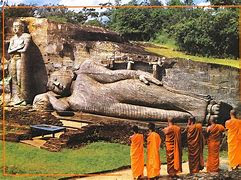SIGIRIYA
| Location | Central province |
|---|---|
| Elevation | 349 m |
| Built for | King Kashyapa of Sri Lanka |
| Visitors | 1 million |
:
Lion's paws - These are the most recognizable feature of Sigiriya. It is located at the summit of the lion mouth.
Sigiriya water gardens and fountains
Symmetrical Design: The water gardens are a complex masterpiece of irrigation engineering. They consist of pools, fountains, and lawns arranged symmetrically. A main pathway divides a central pool into four sections, with an island at the center.
Sigiriya as the UNESCO heritage site
On 17th December 1982, after assessing the aforementioned outstanding values in Sigiriya, the World heritage committee decided to inscribe the site a World Heritage Site under Criterion II, III, and IV of the operational Guidelines.















